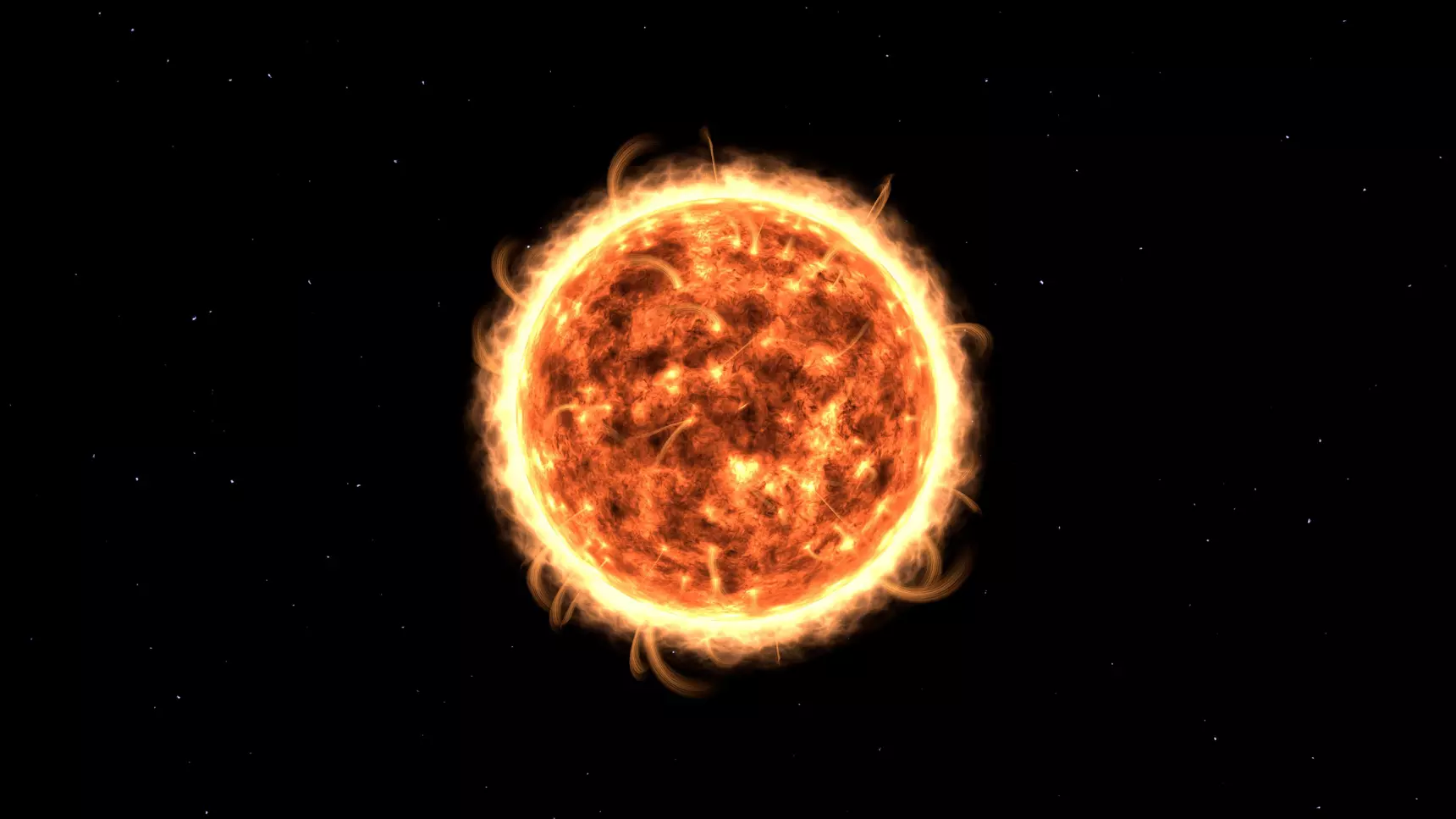Sun’s tiny jets feed massive solar wind
- May 9, 2023
- 0
Streams of charged particles continually rise from the Sun’s atmosphere and radiate outward at millions of kilometers per hour, creating such a massive solar wind that its boundaries
Streams of charged particles continually rise from the Sun’s atmosphere and radiate outward at millions of kilometers per hour, creating such a massive solar wind that its boundaries

Streams of charged particles continually rise from the Sun’s atmosphere and radiate outward at millions of kilometers per hour, creating such a massive solar wind that its boundaries define the outer edge of our Solar System. Despite the widespread distribution of this wind, its formation was long a mystery. Now, a new analysis claims that the solar wind is powered by periodic small bursts of jets in the solar corona or outer layer. “The idea is similar to how individual applause in an auditorium turns into a steady roar when the audience applauds,” said Craig DeForest, a solar physicist at the Southwest Research Institute in Boulder, Colorado and co-author of the study.
While scientists already knew that the corona hosts small jets that typically last a few minutes, they had previously only detected a small number, particularly at the base of plumes emanating from the colder, less dense regions of the corona known as the corona. holes.
A new study shows these are ubiquitous. “Once you know how to find them, you’ll find they are consistently ubiquitous, in almost every structure in the corona,” said co-author Dan Seaton, a solar physicist at the Southwest Research Institute.
The team found that jets, each 1,000 to 3,000 kilometers wide, are present even during the solar minimum, the least active phase of the Sun’s 11-year cycle; this is a result consistent with the pervasive nature of the solar wind. “You can pick any day at random and the jets will be there just like the solar wind,” said Noor Rawafi, a solar physicist at the Johns Hopkins University Applied Physics Laboratory and lead author of the study.
In a paper outlining the new findings published last month Astrophysical JournalThe team provides evidence that the jets are caused by a process called magnetic reconnection, which heats and accelerates a plasma of charged particles. The researchers hypothesize that the jets create waves that then heat the corona and allow the plasma to escape the Sun’s gravity and coalesce to form the solar wind.
“The numbers look promising and show that it’s actually possible that jets can deliver mass lost from the Sun to the solar wind,” said Charles Kankelborg, a solar physicist at Montana State University who was not involved in the study.
The idea that small periodic events can collectively drive the solar wind comes from the work of solar physics pioneer Eugene Parker, who died last year. In 1988, he proposed that a “swarm of nanoflames” caused by small bursts of magnetic reconnection could heat the corona enough to power the wind.
However, evidence of this small-scale reconnection has been difficult to detect due to the low resolution of magnetic measurements.
For the new study, researchers examined high-resolution images from a variety of sources, including NASA’s Solar Dynamics Observatory, the GOES-R satellites best known as weather satellites, and the Goode Solar Telescope at the Big Bear Solar Observatory. They found that coronal regions that previously seemed devoid of magnetic flux are actually filled with complex magnetic fields. The team was also able to connect several jets to specific reconnection events. The researchers expect even finer-scale magnetic field data to reveal higher reconnection and jet rates.
The team also hypothesized that the jets generate a type of wave called the Alfvén wave, which heats the corona. Alfvén waves were considered a competing mechanism that could explain the solar wind. But there is a growing belief that these processes can work together. “The global presence of these reconnection-driven jets provides a natural explanation for both the reconnection and the Alfvén waves powering the solar wind,” said Judith Karpen, a solar physicist at NASA’s Goddard Space Flight Center.
Source: Port Altele
As an experienced journalist and author, Mary has been reporting on the latest news and trends for over 5 years. With a passion for uncovering the stories behind the headlines, Mary has earned a reputation as a trusted voice in the world of journalism. Her writing style is insightful, engaging and thought-provoking, as she takes a deep dive into the most pressing issues of our time.